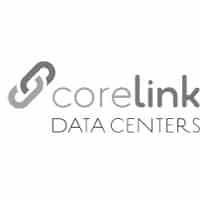Designing and engineering a data center, computer room, or mission-critical facility is a complex process with multiple phases. It is a big undertaking and one that is best left to experienced professionals because decisions made now will greatly impact your functionality and scalability in the future. Every data center needs speed, efficiency, and scalability but you want to carefully examine the needs of your organization, consider what future needs may arise, and look for the most cost-effective way to achieve your desired outcome.
 Working with an experienced data center design and engineering company will prove invaluable because there are just so many factors to consider and complicated components that even technologically svavvy people may not realize. Further, you want to work with an experienced engineer so that you can avoid many of the common pitfalls of a data center build, as Data Center Frontier notes, “Building data centers is a complex and time-consuming process, often involving dozens of contractors and hundreds of moving parts. Missed deadlines, confusion over responsibilities, and impractical schedules can have ripple effects that delay a data center construction project by months or more…Complex projects like data centers require thorough definition at the early stages, putting the right people in the right place, and creating the right channels for communication; except handling and enforcement of commitments. Getting this right from initial programming and design to final commissioning of the facility demands a program and project manager with a proven track record.
Working with an experienced data center design and engineering company will prove invaluable because there are just so many factors to consider and complicated components that even technologically svavvy people may not realize. Further, you want to work with an experienced engineer so that you can avoid many of the common pitfalls of a data center build, as Data Center Frontier notes, “Building data centers is a complex and time-consuming process, often involving dozens of contractors and hundreds of moving parts. Missed deadlines, confusion over responsibilities, and impractical schedules can have ripple effects that delay a data center construction project by months or more…Complex projects like data centers require thorough definition at the early stages, putting the right people in the right place, and creating the right channels for communication; except handling and enforcement of commitments. Getting this right from initial programming and design to final commissioning of the facility demands a program and project manager with a proven track record.
4 Phases of Data Center Design and Engineering
Phase 1: Decisions
During the first phase, it is time to look at your organization’s needs and establish clear criteria that will help support those needs. This stage is fully conceptual so now is the time to assess any existing shortcomings if you already have a data center as well as consider your construction site, budget, and timeline. All of these factors will help you make critical decisions about equipment, infrastructure, backup power, cooling equipment, and more. Decision-making can be tricky because it tends to involve a lot of stakeholders with different goals and priorities for which they must advocate. But, as mentioned, the decisions made now, and changes to decisions, can lead to going over budget, spending more money down the line, or delaying project completion.
Needless to say, Phase 1 is exceptionally important in the process of designing and engineering a data center. Your data center engineer should work with you, utilizing their knowledge and expertise to help you and your organization work together to establish key criteria, develop a conceptual plan, assess risk, and conduct a pre-construction site survey so that you can make well-informed, strategic decisions regarding your data center build.
Phase 2: Design
With goals and a plan in place, it is time to design your data center. During this stage, you will work with your data center engineering team to integrate your business objectives and criteria into a design that accounts for your architecture, mechanical and electrical elements, and cooling needs. It is important to make a design so that you can begin to choose vendors, get comprehensive cost estimates, and anticipate timelines but it is also important to have a flexible design approach because, as we know, things change at a moments notice and you want to remain adaptable to keep your data center build project moving forward.
 Data Center Dynamics elaborates on the complicated process of designing and building a data center, “Every new building project has its challenges, especially data centers; anyone who has built a data center will be painfully aware of the risks involved. This is borne of the necessary integration of the building itself with a vast array of sensitive high-tech equipment: power systems, cooling systems, security systems, air flow structures, fire detection and fighting systems, facility management systems, etc. They all need to be dimensioned and installed in such a way as to interoperate optimally. Systems and space need to be tightly integrated into a highly tuned machine.In order to achieve this, there needs to be a high degree of coordination between civil works builders, equipment vendors, system integrators and general contractors. This, of course, can present significant challenges and the risks of running over budget and over time are high.”
Data Center Dynamics elaborates on the complicated process of designing and building a data center, “Every new building project has its challenges, especially data centers; anyone who has built a data center will be painfully aware of the risks involved. This is borne of the necessary integration of the building itself with a vast array of sensitive high-tech equipment: power systems, cooling systems, security systems, air flow structures, fire detection and fighting systems, facility management systems, etc. They all need to be dimensioned and installed in such a way as to interoperate optimally. Systems and space need to be tightly integrated into a highly tuned machine.In order to achieve this, there needs to be a high degree of coordination between civil works builders, equipment vendors, system integrators and general contractors. This, of course, can present significant challenges and the risks of running over budget and over time are high.”
Your design must take into account your spatial capacity and availability, electrical needs, and other mechanical criteria. Fortunately, when working with an experienced professional, you will see that there are existing data center designs that account for all of that and incorporate best practices based on existing data about data centers to help you design the best data center for your organization’s needs. Those existing designs can be adapted as needed but by using something that has been tested and used before, you can accelerate your data center build and provide you with a more predictable outcome.
Phase 3: Delivery
The delivery stage is the beginning of the construction all the way through the completion of construction. During this phase, all necessary city permits will be obtained, timeline and completion reports will be frequently updated and provided, subcontractors will be working and managed by your data center engineer, all equipment will be installed and tested, network integration will take place, and your data center will be inspected for optimal operation.
Phase 4: Maintenance
Once your data center build project is complete, the work does not exactly stop. To keep your data center running efficiently and effectively, there will be ongoing maintenance needs. Ideally, you will work with the company that you built your data center with because they have the most comprehensive knowledge of your data center’s design and infrastructure.
Work with an experienced data center design and engineering company that can guide you from the outset and help you design and bring to life a data center that meets and exceeds your expectations.




























